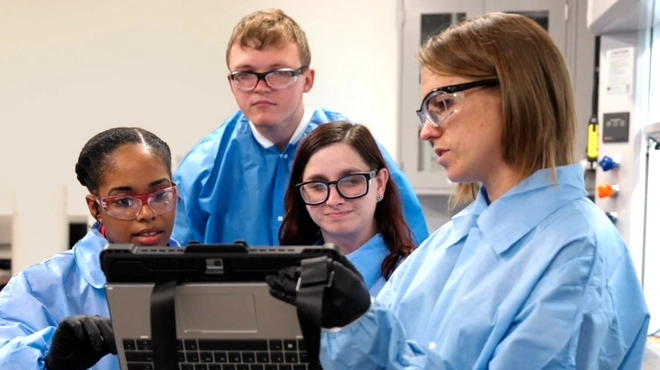That’s because scientists are currently working to develop a number of treatments that are expected to be more effective than traditional chemotherapies in stopping cancer, and may also ultimately be shown to have fewer side effects. They’re also finding that combinations of these targeted therapies have the potential to be even more effective in slowing or even halting cancer growth.
These biologic agents work against specific proteins or enzymes in tumor cells that drive cancer development. “Cancer is a disease that, in most cases, forms because single cells in the body have lost the ability to undergo a controlled cell division,” explains Malte Peters, clinical head of Translational Medicine in Oncology for Novartis Pharma AG in Basel.
Combining therapies may increase [patients’] chances to live longer, to live longer without a recurrence, and to live a better quality of life.
Malte Peters, Clinical Head of Translational Medicine, Oncology, Novartis Pharma AG
“The simplest way to think of it is that either the cells can accumulate to a greater degree than they normally would without stopping, or they divide at a faster rate,” adds David Lebwohl, senior vice president and global head of Oncology Clinical Development at Novartis.
These signals operate in pathways, or networks, similar to interstate highways, Lebwohl explains. When the interstate is clear, traffic runs smoothly. But an accident at one part, or a closed exit ramp, can lead to massive traffic snarls. That’s what happens in cancer, where an error in any signal along the pathway can bring the entire growth-regulating system to a halt.
Novartis has several agents on the market that interfere with these signaling errors. The company also has at least 20 targeted agents in active clinical trials, most of which are being tested in combination with existing or investigational compounds for a variety of cancers.
For instance, Novartis is investigating a compound that inhibits an important growth-activation pathway in cancer cells called RAF/MEK/ERK. In addition to studying the drug alone in patients with advanced or metastatic melanoma, the company also is investigating its potential effectiveness and safety in combination with several other compounds, each of which targets other aberrant chemicals on the cancer-causing pathways.
Novartis has more than 100 active clinical trials in this area. These new drugs and combinations of drugs could shift how cancer is treated.
That’s because scientists have learned that sometimes attacking one pathway may not be enough. Just as you can take an alternative route if one part of a highway is blocked, so, too, can cancer cells bypass a blocked receptor and continue on with its uncontrolled growth. “There are often redundant pathways,” said Lebwohl, which is why a single drug may only work so well for so long before eventually failing.
One example involves a protein called B-Raf, which is involved in sending signals that direct cell growth. Doctors had been puzzled about why patients with certain B-Raf mutated colon cancers don’t respond well to B-Raf inhibitors — even while those patients with a melanoma that carries the same mutation do.
The reason, as has been reported in the journal Nature, is that inhibiting the B-Raf pathway in colon cancer activates other pathways that stimulate other cancer-causing proteins and enzymes. But researchers are now working to develop a way to block both pathways, thus potentially shutting down cellular growth, explains Lilli Petruzzelli, who is the clinical site head for Novartis’ Oncology Translational Medicine in Cambridge, Mass.
These combination approaches may be more effective, says Lebwohl, because in order to “escape” the effects of combination therapies, the protein or enzyme would have to mutate in different ways at once, “which is very hard for a protein to figure out.” It’s analogous to tying something down with a rope and a chain versus a rope alone, he says.
For instance, Novartis is studying the combination of two BCR-ABL inhibitors for the treatment of chronic myelogenous leukemia. It will be difficult for the cancer to escape this “rope and chain” combination therapy.
Another hope is that by combining therapies, patients can use smaller doses, also limiting the side effects.
The level of research and interest in the results of clinical trials is energizing, Petruzzelli says. She is particularly moved by the thousands of patients who volunteer for clinical trials, which provides critical data about not only the effectiveness and safety of new drugs, but about the pathways that drive growth in individual tumors.
“Our goal is to investigate whether combining therapies can increase patients' chances to live longer, to live longer without a recurrence, and to live a better quality of life,” Peters says.
“It’s a very exciting time to potentially be able to really help people,” concludes Petruzzelli.



